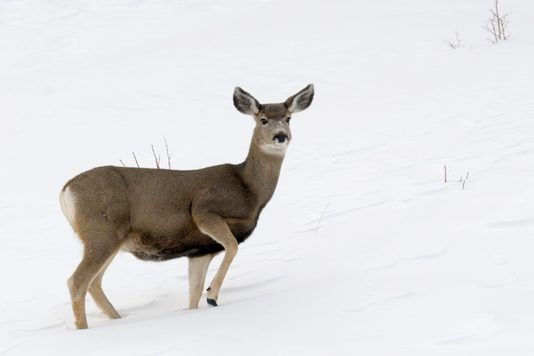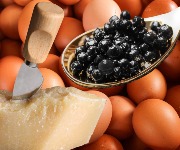Guide to game: The virtues of venison

Exactly what is venison? Nick Baines has the answers, and finds out that deer can be as graceful on the plate as it is in the field.
When it comes to omnivorous eating, there is nothing quite as rewarding as venison, the collective name for meat that comes from any species of deer. In Europe we have been eating deer longer than we have been eating beef, though nowadays, venison is only a fraction of our yearly meat consumption.
High in iron and protein, low in cholesterol and almost no saturated fat to speak of, venison is probably considered the world’s healthiest red meat, perfect for those who opt for leaner cuts and packed with intricate gamey flavours.
Species
There are six main species of deer in the UK. Fallow, Red, Sika, Muntjack, Roe and Chinese water deer. Whilst all make tremendous eating, Red and Fallow deer are the most commonly available to consumers, with other species predominantly in the hands of the catering trade. Mike Robinson, Chef Owner of The Pot Kiln and ambassador for BASC, manages around 25,000 deer across estates in Berkshire and Hampshire. “Each species has its own flavour and grain of meat,” explains Robinson. “For instance, Muntjack is sweet and dense, it’s a delight to cook with.”
Wild or farmed
Purists will say that wild venison is infinitely better than those that are farmed. However, there are many variables when it comes to wild venison and without experience, the home cook can be somewhat unsuccessful when it comes to cooking. “The meat from older animals can be tougher and contain more sinews,” explains Nicola Fletcher, author of Ultimate Venison Cookery and producer of farmed venison. “The fundamental difference between wild and farmed, is that wild venison is a by product of stalking and population control, where as farmed venison is reared specifically for food. We can control the consistency of the meat by ensuring our deers are mature enough for great flavour, but young enough to be tender.”
Whilst there is undisputedly a place for farmed venison, the varying complexities of wild deer can be incredibly rewarding. Grazing on grasses, berries, wild herbs and whatever foliage they wish, the deer take on the essence of the British countryside in countless combinations of foraged foods. The complexities of the meat demonstrate the sheer magic of venison and the importance of provenance with hunted game.
The flavour
Venison, as with all game, is traditionally thought of as strong and bold in flavour and because of this, has made some reluctant to try it. The truth of the matter lays in the hanging; those rich flavours are intensified dramatically over several days. Venison hung for only two or three days has a much subtler flavour, ideal for those only just venturing into the territory of cooking game.
Marinades are often overlooked when it comes to venison. A mild acidity in a marinade helps to tenderize the meat, which is of great benefit if the deer is either old or has suffered stress during the kill. Cream is another, less frequent addition, which melds beautifully with the rich meat. However you decide to prepare your venison, be sure to treat it with care and remember that unlike many of the farmed meats we have become used to, it is naturally lean and carries far less moisture. Treat it with care and respect and you will be handsomely rewarded.
Tomorrow we look at rabbit and hare
Try out these recipes
Most Recent
Comments
Be the first to comment
Do you want to comment on this article? You need to be signed in for this feature








